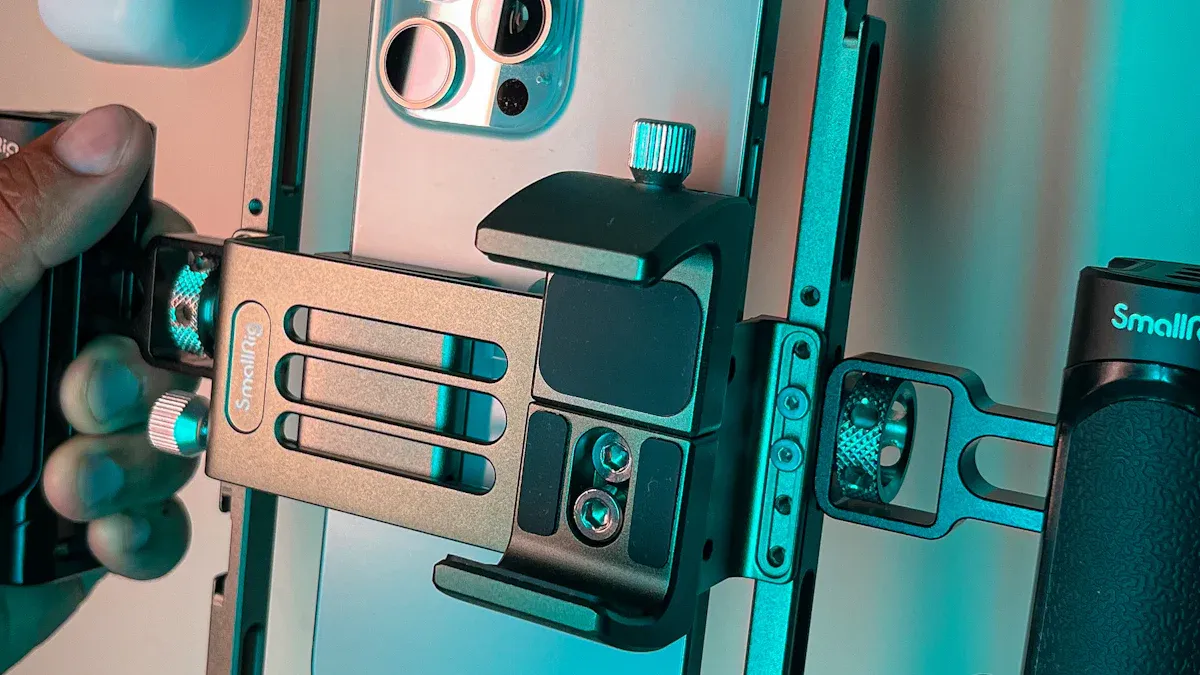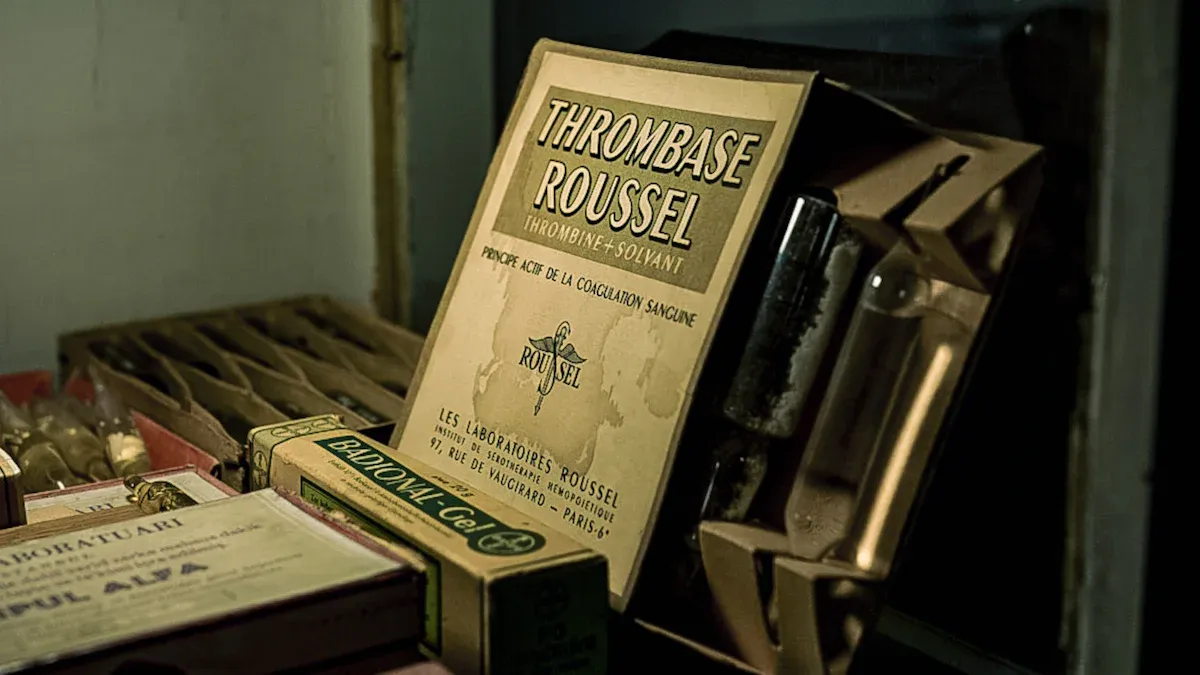Step-by-Step Guide to Changing Batteries in a Helius Flashlight

Batteries play a crucial role in flashlights, powering them for reliable use. Replacing the batteries in your Helius flashlight ensures optimal performance. Proper maintenance, like timely battery changes, keeps your flashlight dependable. Neglecting this can reduce its efficiency. Take care of your flashlight to extend its lifespan and maintain its functionality.
Key Takeaways
Get the needed items like new batteries, a soft cloth, and gloves before changing the batteries. Being ready makes the process easier and faster.
Replace all the batteries together and use the right type. This stops leaks and keeps the flashlight working well. Don’t mix old and new batteries to avoid problems.
Clean the battery area often and keep your flashlight in a cool, dry spot. This helps it last longer and work properly.
Tools and Preparation for Replacing Batteries

Items You’ll Need for Your Helius Flashlight
Before replacing the battery in your Helius flashlight, gather the necessary tools and materials. Having everything ready ensures a smooth process and prevents interruptions. Here’s what you’ll need:
Replacement Batteries: Check the flashlight manual to confirm the correct type and size of the battery. Using the wrong battery can affect performance or damage the flashlight.
Soft Cloth or Brush: Use these to clean the battery compartment and remove any dirt or corrosion.
Protective Gloves: These protect your hands from any potential leaks or residue from old batteries.
A Flat Surface: Work on a stable, clean surface to avoid losing small parts or dropping the flashlight.
Having these items on hand simplifies the replacement process and helps maintain the flashlight’s performance.
Safety Precautions When Handling Batteries
Handling batteries requires care to ensure your safety and the flashlight’s longevity. Follow these precautions to avoid common hazards:
Replace all batteries at the same time. Mixing old and new batteries can cause leaks or reduce performance.
Use only the recommended batteries for your flashlight. Incompatible batteries may overheat or fail.
Store spare batteries in a cool, dry place. Avoid exposing them to heat, cold, or liquids.
Never recharge batteries unless they are specifically designed for recharging.
Avoid opening or disposing of batteries in fire. This can lead to explosions or toxic fumes.
Remove batteries from the flashlight if you won’t use it for an extended period. This prevents leaks that could damage the battery compartment.
By following these precautions, you protect yourself and ensure the flashlight operates at its best. Proper maintenance also extends the lifespan of both the flashlight and its batteries.
Step-by-Step Instructions for Changing Batteries

Locate the Battery Compartment on Your Flashlight
To begin, identify where the battery compartment is located on your Helius flashlight. Most models have the compartment at the base or under a removable cap. Look for a twist-off or slide-open mechanism. If you’re unsure, refer to the user manual for guidance. Inspecting the battery compartment ensures you understand how to access it without damaging the flashlight.
Remove the Old Batteries Safely
When removing the batteries, follow these best practices to avoid damage or safety risks:
Check the expiration dates on the batteries and dispose of expired ones promptly.
Avoid mixing old and new batteries or different types in the same flashlight.
If you notice leakage, such as corrosion or fluid buildup, wear gloves to handle the batteries safely.
Research local recycling programs or use dedicated bins for proper disposal.
Removing the batteries carefully protects the flashlight’s functionality and prevents battery performance issues.
Select the Right Flashlight Battery and Insert It
Selecting batteries based on flashlight type is crucial for optimal performance. Helius flashlights are compatible with several battery types:
Lithium Batteries: Offer high energy density, longer runtime, and work well in extreme temperatures.
NiMH Batteries: Rechargeable and eco-friendly, ideal for frequent use.
Li-ion Batteries: Lightweight, reliable, and provide consistent power output.
Always select the right flashlight battery by checking the manual for compatibility. Insert the batteries with the correct polarity (+ and -) as marked inside the compartment. Proper insertion ensures the flashlight delivers consistent illumination and runtime.
Test the Flashlight After Replacing Batteries
After inserting the batteries, test the flashlight to confirm it works. Turn it on and check the brightness and functionality. Testing the flashlight immediately helps identify any issues with the battery placement or flashlight components.
Troubleshooting Issues with Your Helius Flashlight
If the flashlight doesn’t work after replacing the batteries, follow these steps:
Verify the battery polarity matches the markings in the compartment.
Ensure all parts are tightly screwed and inspect for damage.
Try a new battery or replace the bulb if it’s an incandescent model.
Clean the contacts and threads to remove dirt or corrosion.
Short the battery’s end with the tube using a paper clip to test the connection.
These steps help resolve common battery performance issues and restore the flashlight’s functionality.
Maintenance Tips for Your Helius Flashlight
Cleaning the Battery Compartment for Longevity
Keeping the battery compartment clean is essential for maintaining a clean and functional flashlight. Dirt or corrosion can interfere with proper functionality and reduce performance. To clean the compartment, inspect it regularly for debris or corrosion. If you notice any buildup, prepare a solution by mixing equal parts of vinegar or lemon juice with water. Dip a cotton swab or soft cloth into the solution and gently scrub the battery contacts and surrounding areas. This mild acidic mixture effectively dissolves corrosion without damaging the flashlight.
After cleaning, ensure the contacts are completely dry before reinserting the batteries. Regular maintenance like this not only extends the lifespan of your flashlight but also ensures reliable illumination whenever you need it.
Proper Storage to Protect Your Flashlight
Proper storage plays a vital role in flashlight maintenance. Always store your flashlight in a cool, dry place to prevent moisture damage and corrosion. Even if your flashlight is water-resistant, prolonged exposure to moisture can harm its components. Avoid leaving it in direct sunlight or freezing conditions, as extreme temperatures can affect performance.
For added protection, use a case, pouch, or holster to shield your flashlight from dust and impacts. If you don’t plan to use the flashlight for an extended period, remove the batteries to prevent leaks. These simple steps help maintain optimal performance and longevity.
Extending Battery Life with Best Practices
To extend the lifespan of your batteries and ensure optimal performance, follow these best practices:
Fully discharge rechargeable batteries before recharging to avoid memory effect.
Use the appropriate charger for your battery type to maximize performance.
Store batteries separately from the flashlight when not in use to prevent leakage and corrosion.
Keep the flashlight dry and clean to avoid moisture damage.
Avoid exposing batteries to extreme temperatures, as this can reduce their efficiency.
By adopting these habits, you’ll enjoy a well-maintained flashlight that delivers reliable illumination and proper functionality for years to come.
Replacing the batteries in your Helius flashlight keeps it reliable and ready for use. Regular maintenance ensures optimal performance and extends its lifespan. Follow these tips to avoid common mistakes:
Clean the exterior to maintain brightness and clarity.
Inspect the battery compartment to prevent corrosion.
Avoid accidental activation by using the lockout feature.
By caring for your flashlight, you ensure it performs well in any situation.
FAQ
How often should you replace the batteries in your Helius flashlight?
Replace the batteries when the flashlight dims or stops working. Regularly check the battery life to ensure your flashlight remains reliable during emergencies or outdoor activities.
Can you use rechargeable batteries in a Helius flashlight?
Yes, you can use rechargeable batteries if they are compatible with your flashlight model. Always refer to the manual for specific battery recommendations.
What should you do if a battery leaks inside the flashlight?
Wear gloves and clean the compartment with a vinegar-water solution. Remove all residue before inserting new batteries to prevent further damage to your flashlight.
See Also
A Comprehensive Guide to Flashlight Cleaning Techniques
Key Strategies for Maintaining Your Flashlight Effectively
All You Should Know About Flashlight Battery Usage
